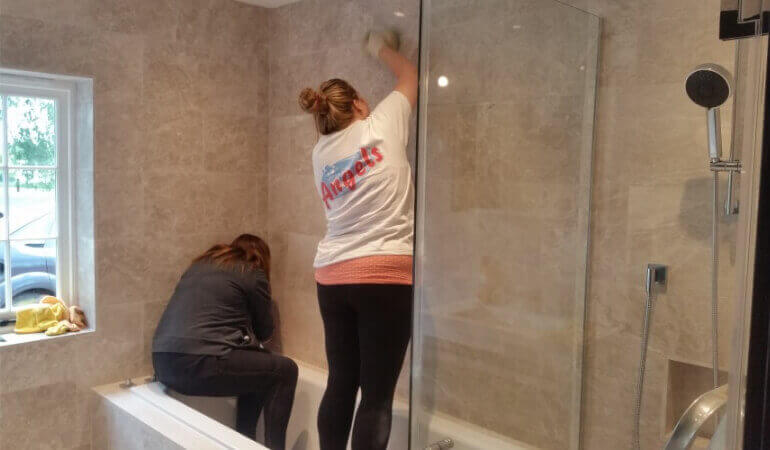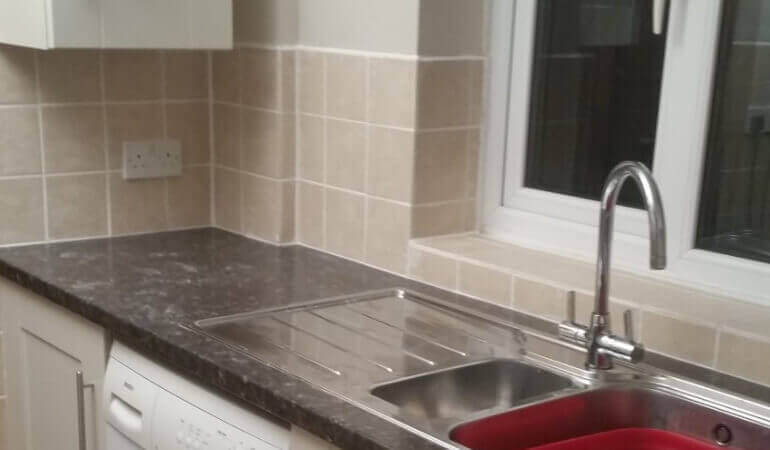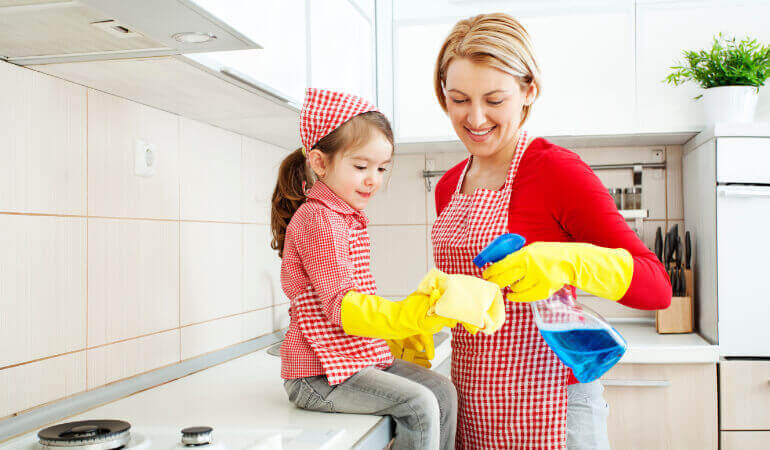

Disinfectants help keep your hard surfaces clean of bacteria and prevent your family from catching infections. To get rid off the most bacteria possible you have to use a disinfectant correctly. Although it’s a good practice to use disinfectants regularly, too much could be bad for your health.
Disinfecting the Kitchen
The most important areas are the surfaces you use most frequently such as door handles, taps and light switch. Surfaces used to prepare food should be cleaned daily. Spray disinfectant on tabletops and kitchen counters and chairs then wipe down with a clean cloth. Chopping boards and breadboards should also be disinfected on regular basis, depending on how often you use them. To kill off the bacteria growing within the pores use vinegar or chlorine-based cleaning solution to scrub the boards. Don’t forget your kitchen sink, it comes into contact with plates, cutlery and even food, it’s important to disinfect thoroughly. Even if you disinfect and wash the surface of your kitchen sink, the damp conditions can still accelerate bacterial growth. Use a towel to dry it out and prevent bacteria growth. Last but not least, the rubbish bin, it’s a haven for bacteria and if not emptied for some time it will start to smell. Clean the bin out, disinfect and apply a deodoriser every couple of weeks. It will help you get rid off the nasty smell.
Disinfecting the Bathroom
Bacteria builds up the most on the toilet bowl and under the sink taps and on surfaces most frequently touched. These include the door handles, the washbasin, the toilet roll holder and light switch. There are a number of commercial cleaners the will effectively disinfect bathroom surfaces. Don’t forget to disinfect bath, shower and sink, areas that are damp or wet for extended periods of time.
Healthy & Safety
To maintain a hygienic household, the use of disinfectants and anti-bacterial cleaning solutions is vital. However they must not be used in excess because the excessive use could be harming your immune system. Over use may even encourage bacteria resistance to disinfectants.
Always read the label and follow the manufacturer’s instructions. Make sure you work in a well ventilated area, wear suitable clothing and protect your hands and face.


